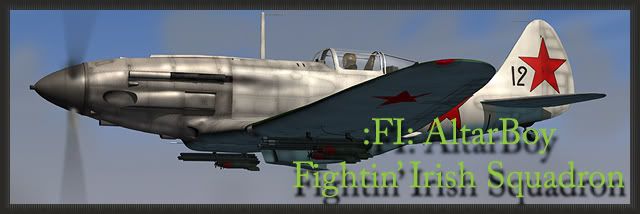The Battle of Palmdale
On the morning of 16 August 1956, Navy personnel at Point
Mugu prepared an F6F-5K for its final mission. The aircraft
had been painted overall high-visibility red. Red and
yellow camera pods were mounted on the wingtips. Radio
remote control systems were checked, and the Hellcat took
off at 11:34 a.m., climbing out over the Pacific Ocean. As
ground controllers attempted to maneuver the drone toward
the target area, it became apparent that it was not
responding to radio commands. They had a runaway.
Ahead of the unguided drone lay thousands of square miles
of ocean into which it could crash. Instead, the old
Hellcat made a graceful climbing turn to the southeast,
toward the city of Los Angeles. With the threat of a
runaway aircraft approaching a major metropolitan area, the
Navy called for help.
Five miles north of NAS Point Mugu, two F-89D Scorpion
twin-jet interceptors of the 437th Fighter Interceptor
Squadron were scrambled from Oxnard Air Force Base. The
crews were ordered to shoot down the rogue drone before it
could cause any harm. Armed with wingtip-mounted rocket
pods and no cannon, the Scorpion was typical of the Cold
War approach to countering the "Red Menace." Each pod
contained 52 Mighty Mouse 2.75-inch rockets.
Salvo-launched, the Mighty Mouse did not have to have
precision guidance. Large numbers of rockets would be fired
into approaching Soviet bomber formations to overwhelm them
with sheer numbers. Today, they would be used against a
different kind of red menace.
At Oxnard AFB, 1Lt. Hans Einstein and his radar observer,
1Lt. C. D. Murray, leapt into their sleek F-89D.
Simultaneously, 1Lt. Richard Hurliman and 1Lt. Walter Hale
climbed into a second aircraft. The interceptors roared
south after their target. The hunt was on.
Einstein and Hurliman caught up with the Hellcat at 30,000
feet, northeast of Los Angeles. It turned southwest,
crossing over the city, then headed northwest. As the
Hellcat circled lazily over Santa Paula, the interceptor
crews waited impatiently. As soon as it passed over an
unpopulated area, they would fire their rockets.
The interceptor crews discussed their options. There were
two methods of attack using the fire control system, from a
wings level attitude or while in a turn. Since the drone
was almost continuously turning, they selected the second
mode of attack. In repeated attempts, the rockets failed to
fire during these maneuvers. This was later traced to a
design fault.
The drone turned northeast, passing Fillmore and Frazier
Park. It appeared to be heading toward the sparsely
populated western end of the Antelope Valley. Suddenly, it
turned southeast toward Los Angeles again. Time seemed to
be running out. Einstein and Hurliman decided to abandon
the automatic modes, and fire manually. Although the
aircraft had been delivered with gun sights, they had been
removed a month earlier. After all, why would a pilot need
a gun sight to fire unguided rockets with an automatic fire
control system?
The interceptors made their first attack run as the Hellcat
crossed the mountains near Castaic. Murray and Hale set
their intervalometers to "ripple fire" the rockets in three
salvos. The first crew lined up their target and fired,
missing their target completely. The second interceptor
unleashed a salvo that passed just below the drone. Rockets
blazed through the sky and then plunged earthward to spark
brush fires seven miles north of Castaic. They decimated
150 acres above the old Ridge Route near Bouquet Canyon.
A second salvo from the two jets also missed the drone,
raining rockets near the town of Newhall. One bounced
across the ground, leaving a string of fires in its wake
between the Oak of the Golden Dream Park and the Placerita
Canyon oilfield. The fires ignited several oil sumps and
burned 100 acres of brush. For a while the blazes raged out
of control, threatening the nearby Bermite Powder Company
explosives plant. The rockets also ignited a fire in the
vicinity of Soledad Canyon, west of Mt. Gleason, burning
over 350 acres of heavy brush.
Meanwhile, the errant drone meandered north toward
Palmdale. The Scorpion crews readjusted their
intervalometers and each fired a final salvo, expending
their remaining rockets. Again, the obsolete, unpiloted,
unguided, unarmed, propeller-driven drone evaded the
state-of-the-art jet interceptors. In all, the jet crews
fired 208 rockets without scoring a single hit.
The afternoon calm was shattered as Mighty Mouse rockets
fell on downtown Palmdale. Edna Carlson was at home with
her six-year-old son William when a chunk of shrapnel burst
through her front window, bounced off the ceiling, pierced
a wall, and finally came to rest in a pantry cupboard.
Another fragment passed through J. R. Hingle's garage and
home, nearly hitting Mrs. Lilly Willingham as she sat on
the couch. A Leona Valley teenager, Larry Kempton, was
driving west on Palmdale Boulevard with his mother in the
passenger seat when a rocket exploded on the street in
front of him. Fragments blew out his left front tire, and
put numerous holes in the radiator, hood, windshield, and
even the firewall. Miraculously, no one was injured by any
of the falling rockets. Explosive Ordnance Disposal teams
later recovered 13 duds in the vicinity of Palmdale. It
took 500 firefighters two days to bring the brushfires
under control.
Oblivious to the destruction in its wake, the drone passed
over the town. Its engine sputtered and died as the fuel
supply dwindled. The red Hellcat descended in a loose
spiral toward an unpopulated patch of desert eight miles
east of Palmdale Airport. Just before impact, the drone
sliced through a set of three Southern California Edison
power lines along an unpaved section of Avenue P. The
camera pod on the airplane's right wingtip dug into the
sand and the Hellcat cartwheeled and disintegrated. There
was no fire.
Air Force................



 I'm surrounded by grumpy old men!
I'm surrounded by grumpy old men!